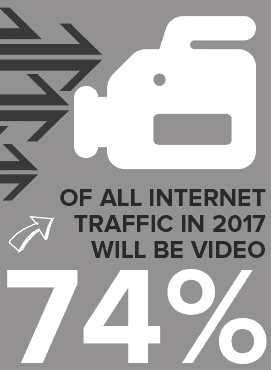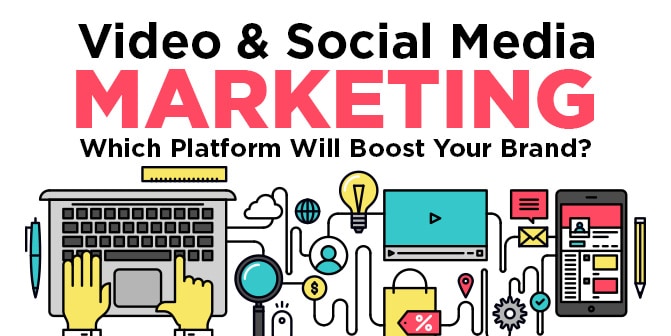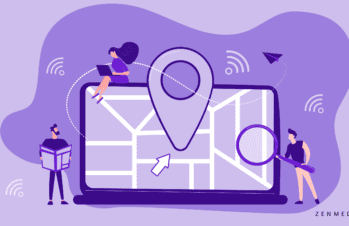I’m sure you’ve noticed it yourself. Given the choice between watching a quick video online, or reading a long swath of content, which would you choose?
If you’re like 59% of the senior executives interviewed by Forbes Insight on the subject, you’d prefer the video.
It’s no wonder, then, that video marketing is growing by leap and bounds. They say a picture is worth a thousand words – and it’s true, as the right image online draws exponentially more eyes than a simple headline ever could, no matter how carefully crafted. But according to Forrester Research, one minute of video is worth 1.8 million words.
1.8 million!
That’s a pretty bold assertion, but the stats bear it out – using video in online marketing delivers a powerful ROI. Especially in the realm of social media marketing, where videos help posts rank higher in the algorithms determining who sees what in their newsfeed, as well as drawing more interest and engagement from audience members, combining the natural appeal of video with the power of social media.
Online shoppers who view a video about a product are 64% more likely to buy that product from that business – and 90% of those who shop online say that videos help them make purchasing decisions.
Back to those senior executives we mentioned before:
- 65% of those who view a video online report that they click through to visit the vendor website.
- 50% look for more information about the product or service.
- 45% contact the vendor.
- 50% of those who viewed an online marketing video went on to make that purchase for their business.
That’s not all. Unbounce reports that incorporating a video onto your homepage can reduce your bounce rates by 80 percent. 73 percent of B2B companies that use video marketing report a positive ROI. In addition, experts predict that 74 percent of all internet traffic in 2017 will be video – that’s almost two-thirds of all traffic.

Now that it’s clear that video marketing works, what’s the best way to incorporate it into your existing social media marketing strategy?
There are several different video types businesses can use to market their products or services via social media. Short Instagram video clips, sped-up time-lapse videos using Hyperlapse, longer, more in-depth videos on YouTube, and Facebook Live streaming videos are some of the most popular approaches. Each has its own particular ideal use cases.
Instagram is for glimpses.
For best results, brew in your favorite cauldron. #happyhalloween
A video posted by Ben & Jerry’s (@benandjerrys) on
Instagram videos allow for up to 60 seconds of action, so anything conveyed in one has to be short, sweet, and to the point. There’s just not enough time for more than a quick glimpse of something – but used wisely, those glimpses can intrigue consumers enough to want to learn more.
Try a sneak peek at a soon-to-be-released product, service, or piece of content or a quick behind-the-scenes look at what goes on in your company. Make it funny, make it interesting, and make it unique, and you’ll have a good chance of viral success.
Hyperlapse showcases processes.
A #Spongebob #artists at work in the #Nickelodeon #Animation Studio! Can you draw #SpongebobSquarepants as fast as she can?? ???? #hyperlapse #art
A video posted by Nickelodeon (@nickelodeontv) on
Every business has some process that either its employees or its customers must go through in order to perform or use its service or product. Hyperlapse, which is another Instagram video tool, is a fun, attention-grabbing way to show off your process. It creates the kind of sped-up time-lapse videos that used to require fancy equipment and saves the video to your phone’s camera roll.
Imagine watching a LASIK surgery being performed in a super-fast time-lapse video, or an identity theft being thwarted, or a product being assembled – or used. Showing potential customers what’ll happen when they do business with you – in an entertaining way – is a great way to move them through that sales funnel.
Some tips for success: remember that Hyperlapse will crop your video into a square format, so your best bet is to shoot vertically with your phone. You can shoot up to 45 minutes of video on Hyperlapse, which can work well if you’re posting the video on your website. However, if you’re posting the video on Instagram, you’ll want to keep your video to 3 minutes or less. That way, it will fit Instagram’s 15-second time limit.
YouTube is for heavy lifting.
If you want to make a video that does more than give a quick glimpse or showcase a process, then YouTube is the right fit. Easily embedded into social media posts, YouTube videos can inform, illustrate, or just make people laugh. But while these videos can be longer, seconds still count – the first 10, to be precise.
According to research done by Visible Measures, 20% of viewers click away from a video in 10 seconds or less. After 30 seconds, you lose about one-third of viewers, 45% of them after one minute and almost 60% after 2 minutes. The takeaway? Make sure your video starts out with a bang and is still holding interest at each of these points.
Something to note is that despite YouTube’s ubiquity, many marketers don’t know how to use their YouTube channel to its fullest potential. While specific videos may get lots of views, you might find that your channel isn’t gaining subscribers, or that views drop off sharply after a period of time.
There are lots of ways you can increase your success on YouTube (read about many of them in our post on how to get people to watch your YouTube video), but one of the most important is: be consistent. Whether that means posting one video per month or 20, consistency will go a long way toward bringing in followers and gaining traction for your channel.
Facebook Live is for engagement.
Facebook Live entered the live streaming game early this year and saying that it’s been a hit would be an understatement. Live streaming is quickly becoming a popular way for businesses to showcase their product launches, give glimpses of their events, host Q&A sessions, and more.
This platform is a great way to build engagement with your brand – according to Facebook’s data, Facebook users comment 10 times more on live videos than they do on regular videos, and 89 percent of people who’ve watched Facebook Live have watched live streams from brands.
If you’re planning a live stream, there are a couple of things you can do to ensure success. First, prepare: make sure your equipment is ready and working reliably, and that your location is ready. While you’re going for immediacy, you still want your live stream to look polished.
Second, promote it! There’s no point in going live if no one knows it’s happening. Let people know in advance when your live stream will be happening by posting across all your social media channels and keep promoting via social media while you’re streaming. This way, you can pick up viewers throughout your live stream.
Incorporating Instagram, Hyperlapse, YouTube, and Facebook Live videos into your social media marketing strategy is a proven way to boost your company’s online marketing ROI. With some creativity and strategic thinking, you can harness the power of video marketing for your company today.





